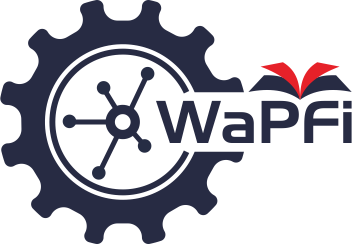Bibliometric analysis of STEAM in physics education: exploring scopus database on the last decades (2013-2023)
Abstract
Physics education currently combines science, technology, engineering, art, and mathematics (the STEAM concept) in learning, creating a more interesting and creative way of learning. This study used 57 articles from the Scopus database with publication years ranging from 2013 to 2023. This study aimed to provide an understanding of STEAM research in physics education. This article conducts a bibliometric analysis of the STEAM literature in physics education, focusing on three main research questions: (1) How is the development of research on STEAM in physics education? (2) Which authors, affiliations, and countries have contributed the most to research on STEAM in physics education? (3) Who is most often used as the subject of STEAM research in physics education? This study combines quantitative analysis with descriptive methods. In the process of this research, two software tools were employed: Bibliometrix R-tool and BiblioShiny for data analysis, dimensionality reduction, and information mapping, and Flourish for data visualization. The results of this study for the first question found that the annual growth rate was 17.46%. This indicates that the number of journal articles discussing incorporating STEAM in physics education continues to increase, reflecting the increasing discussion and sharing of information on this topic. This research also found Jesionkowska J to be the author who is in the top ranking for the most frequently mentioned documents globally, the University of Ceu Cardenal Herrera to be the institution that has contributed the most to STEAM Physics Education research, and Spain is the top ranking for the country that has contributed the most to research. STEAM in physics education. In addition, it was also found that the top STEAM research subjects in the field of physics education were SMA/SMK students and teaching staff.
Downloads
References
Agbo, F. J., Oyelere, S. S., Suhonen, J., & Tukiainen, M. (2021). Scientific production and thematic breakthroughs in smart learning environments: a bibliometric analysis. Smart Learning Environments, 8(1). https://doi.org/10.1186/s40561-020-00145-4
Bedewy, S. El, Choi, K., Lavicza, Z., Fenyvesi, K., & Houghton, T. (2021). STEAM Practices to Explore Ancient Architectures Using Augmented Reality and 3D Printing with GeoGebra. Open Education Studies, 3(1), 176–187. https://doi.org/10.1515/edu-2020-0150
Bin Amiruddin, M. Z., Magfiroh, D. R., Savitri, I., & Binti Rahman, S. M. I. (2022). Analysis of The Application of The STEAM Approach to Learning In Indonesia: Contributions to Physics Education. International Journal of Current Educational Research, 1(1), 1–17. https://doi.org/10.53621/ijocer.v1i1.139
Büyükkidik, S. (2022). A Bibliometric Analysis: A Tutorial for the Bibliometrix Package in R Using IRT Literature. Journal of Measurement and Evaluation in Education and Psychology, 13(3), 164–193. https://doi.org/10.21031/EPOD.1069307
Conradty, C., & Bogner, F. X. (2019). From STEM to STEAM: Cracking the Code? How Creativity & Motivation Interacts with Inquiry-based Learning. Creativity Research Journal, 31(3). https://doi.org/10.1080/10400419.2019.1641678
Conradty, C., Sotiriou, S. A., & Bogner, F. X. (2020). How creativity in STEAM modules intervenes with self-efficacy and motivation. Education Sciences, 10(3). https://doi.org/10.3390/educsci10030070
Cook, K., Bush, S., Cox, R., & Edelen, D. (2020). Development of elementary teachers’ science, technology, engineering, arts, and mathematics planning practices. School Science and Mathematics, 120(4). https://doi.org/10.1111/ssm.12400
DeJarnette, N. K. (2018). Implementing STEAM in the Early Childhood Classroom. European Journal of STEM Education, 3(3). https://doi.org/10.20897/ejsteme/3878
Donthu, N., Kumar, S., Mukherjee, D., Pandey, N., & Lim, W. M. (2021). How to conduct a bibliometric analysis: An overview and guidelines. Journal of Business Research, 133. https://doi.org/10.1016/j.jbusres.2021.04.070
Hudha, M. N., Hamidah, I., Permanasari, A., Abdullah, A. G., Rachman, I., & Matsumoto, T. (2020). Low carbon education: A review and bibliometric analysis. In European Journal of Educational Research (Vol. 9, Issue 1, pp. 319–329). Eurasian Society of Educational Research. https://doi.org/10.12973/eu-jer.9.1.319
Lindsay, S. M. (2021). Integrating microscopy, art, and humanities to power STEAM learning in biology. Invertebrate Biology, 140(1). https://doi.org/10.1111/ivb.12327
Liu, W., Huang, M., & Wang, H. (2021). Same journal but different numbers of published records indexed in Scopus and Web of Science Core Collection: causes, consequences, and solutions. In Scientometrics (Vol. 126, Issue 5). https://doi.org/10.1007/s11192-021-03934-x
Mariano, W. K., & Chiappe, A. (2021). 21st-century skills and their relationship to STEAM learning environments: A review. In Revista de Educación a Distancia (Vol. 21, Issue 68). Universidad de Murcia. https://doi.org/10.6018/red.470461
Moon, S., & Kang, K. (2015). Trend of STEAM education-related domestic studies focusing on physics-related studies. New Physics: Sae Mulli, 65(12), 1199–1208. https://doi.org/10.3938/NPSM.65.1199
Moral-Muñoz, J. A., Herrera-Viedma, E., Santisteban-Espejo, A., & Cobo, M. J. (2020). Software tools for conducting bibliometric analysis in science: An up-to-date review. In Profesional de la Informacion (Vol. 29, Issue 1). https://doi.org/10.3145/epi.2020.ene.03
Nasir, A., Shaukat, K., Hameed, I. A., Luo, S., Alam, T. M., & Iqbal, F. (2020). A Bibliometric Analysis of Corona Pandemic in Social Sciences: A Review of Influential Aspects and Conceptual Structure. In IEEE Access (Vol. 8). https://doi.org/10.1109/ACCESS.2020.3008733
Supriyadi, E., Dahlan, J. A., Darhim, D., & Taban, J. (2022). Bibliometric Analysis: Trend of ICT and RME Researches. Eduma : Mathematics Education Learning and Teaching, 11(2). https://doi.org/10.24235/eduma.v11i2.11023
Tan, W.-L., Samsudin, M. A., Ismail, M. E., & Ahmad, N. J. (2020). GENDER DIFFERENCES IN STUDENTS’ ACHIEVEMENTS IN LEARNING CONCEPTS OF ELECTRICITY VIA STEAM INTEGRATED APPROACH UTILIZING SCRATCH. Problems of Education in the 21st Century, 78(3), 423–448. https://doi.org/10.33225/pec/20.78.423
Trinidad, M., Ruiz, M., & Calderon, A. (2021). A Bibliometric Analysis of Gamification Research. IEEE Access, 9, 46505–46544. https://doi.org/10.1109/ACCESS.2021.3063986
Wilson, B., & Hawkins, B. (2019). Art and Science in a Transdisciplinary Curriculum. CIRCE: The Centre for Imagination in Research, Culture & Education.






